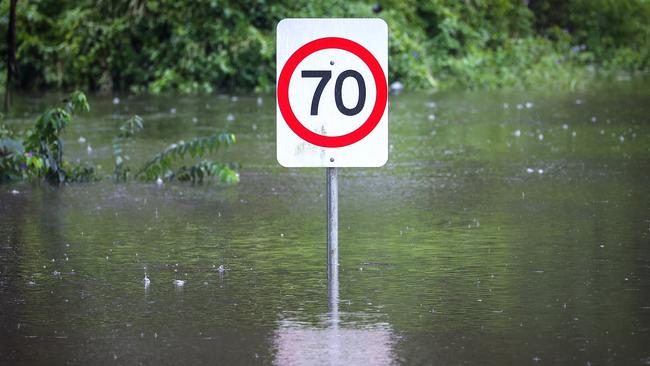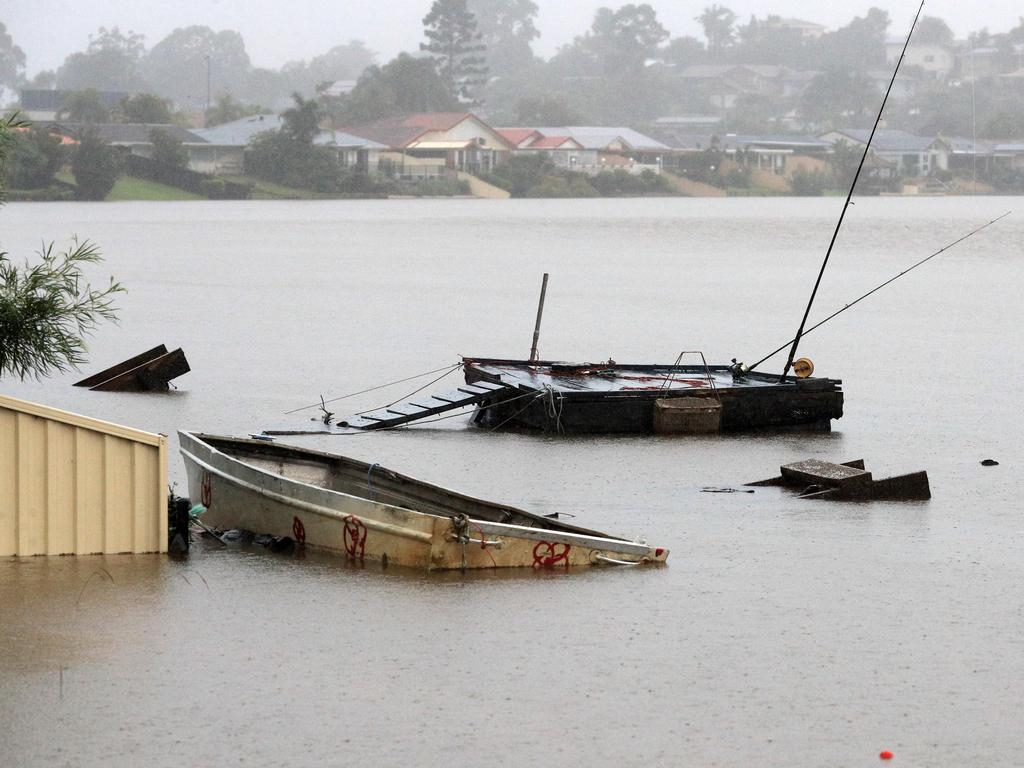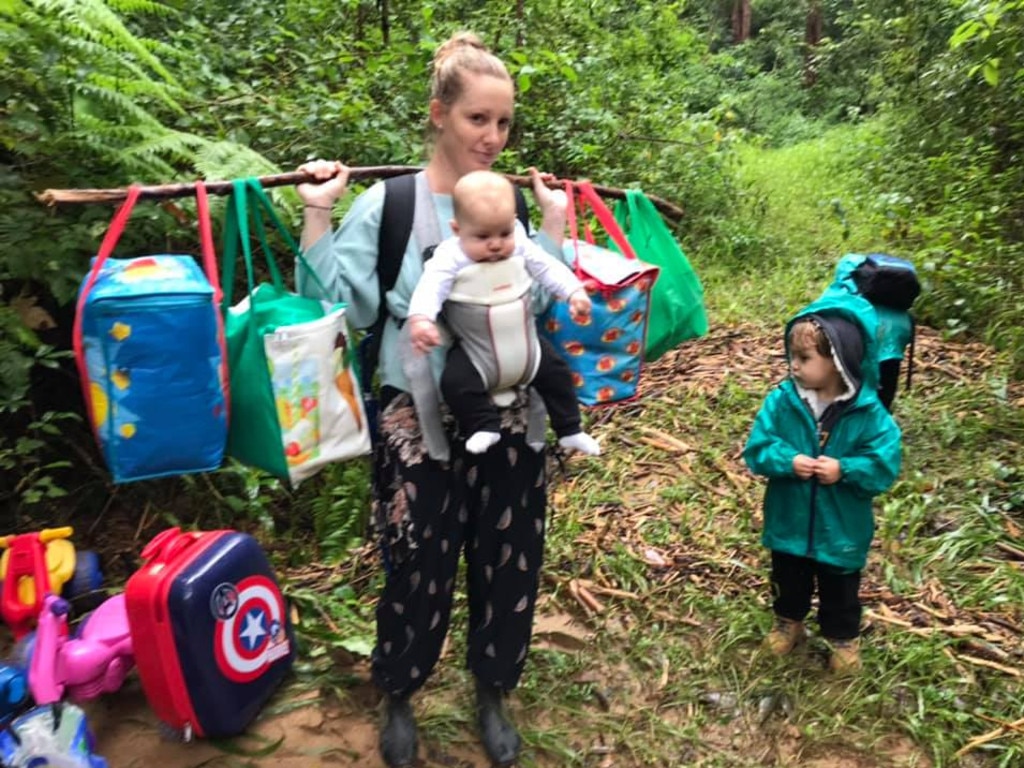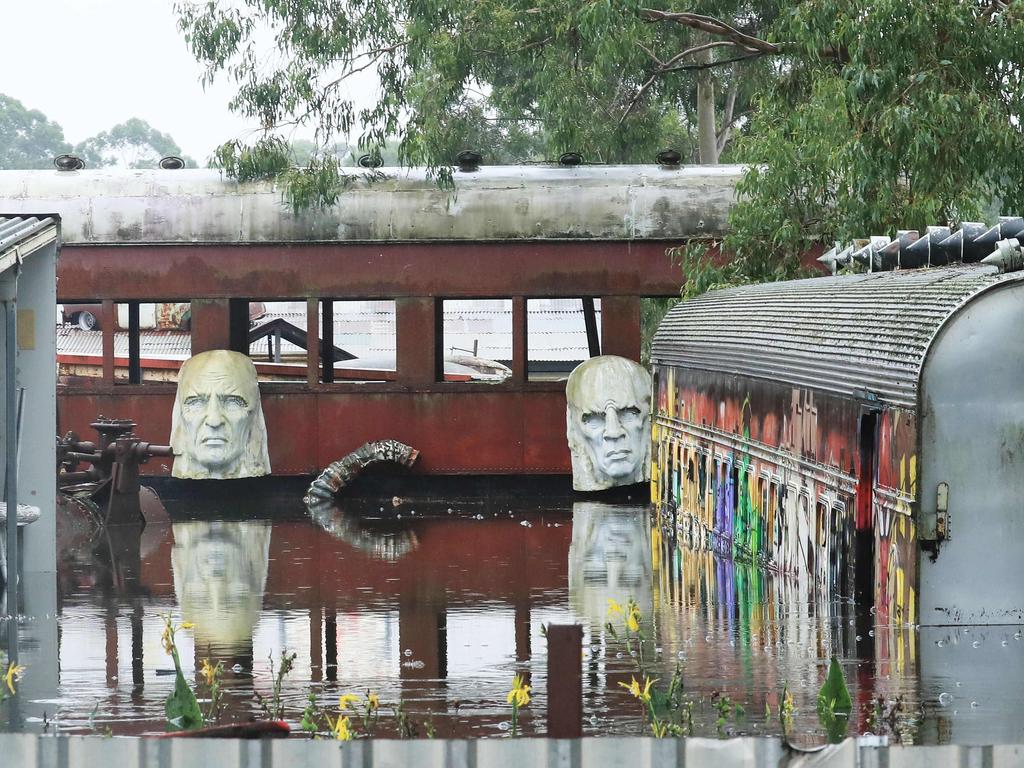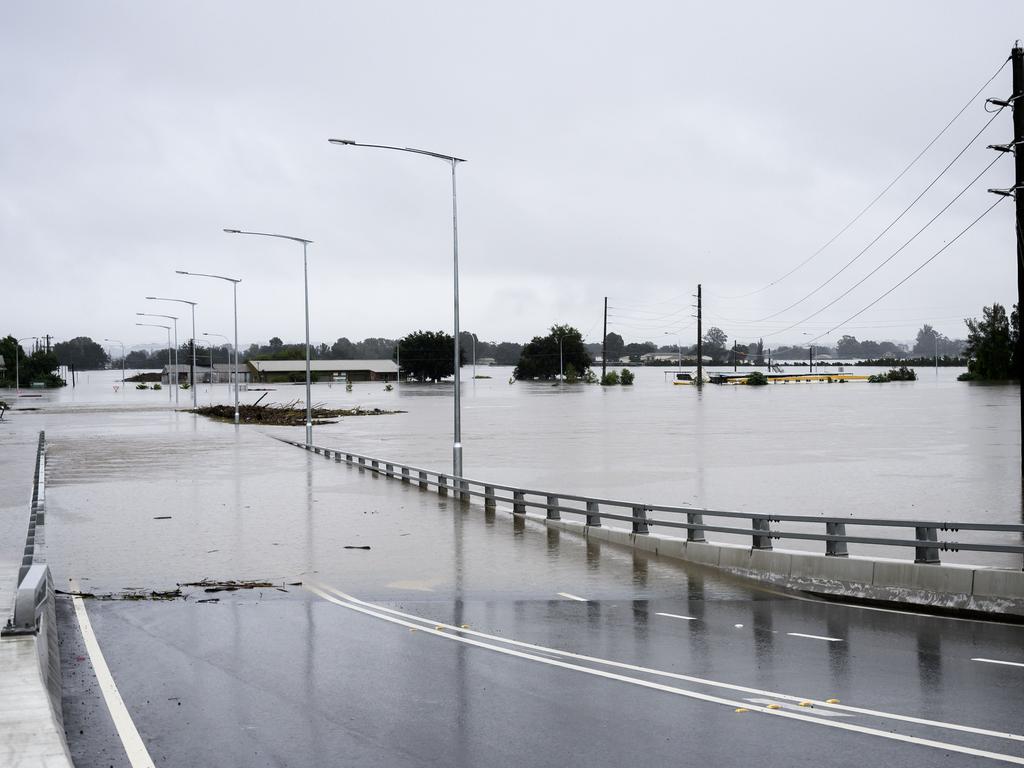Flood crisis: Blue skies across NSW but ‘we’re not out of the woods’, Premier Gladys Berejiklian warns; Scott Morrison tours flood-affected areas
Scott Morrison surveys the damage as Gladys Berejiklian warns ‘we’re not out of the woods’.
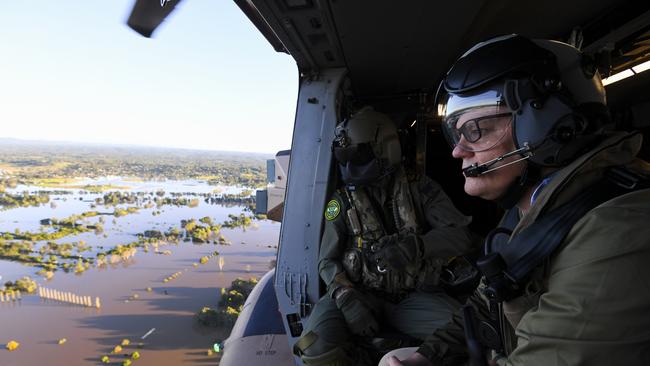
As parts of NSW wake up to blue skies on Wednesday morning, authorities shift their focus to the recovery as Scott Morrison tours the communities ravaged by floods.
The police, the State Emergency Services (SES) and the Rural Fire Service (RFS) will on Wednesday turn their attention to begin the “substantial task” of cleaning up the areas damaged by the extreme weather.
The Australian Defence Force is also on standby to pitch in.
Photo of the Day: Its out, the sun is finally out!!!! This photo just taken at Eighth Av Bridge at South Creek in Llandilo NW Sydney. #NSWRFS#nswfloodspic.twitter.com/UurvCuaLdX
— NSW RFS (@NSWRFS) March 23, 2021
“We’re starting to focus on the clean-up and the recovery because we know what a substantial task that will be,” Premier Gladys Berejiklian told a press conference Tuesday morning.
“We’re certainly not out of the woods in terms of the immediate flood danger, but we have to turn our minds to how we start the clean-up and the recovery.”
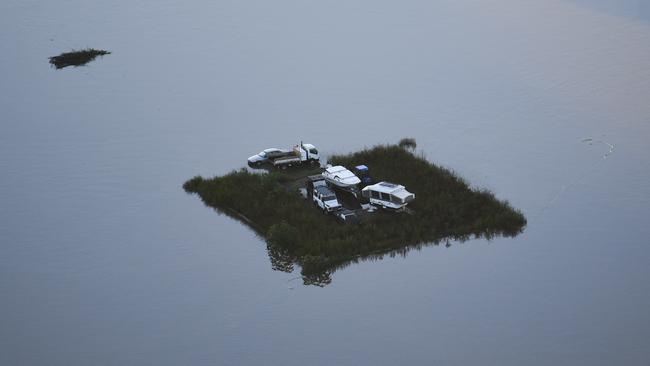
Deputy Premier John Barilaro will lead the clean up and recovery mission for NSW residents, and Resilience NSW Commissioner Shane Fitzsimmons will co-ordinate the agencies assisting.
An additional 6000 people were evacuated from their homes over the past 24 hours, bringing the total to 24,000.
Here comes the sun......#Sydneypic.twitter.com/v5OUe0ALMK
— Mark Padginton (@MarkPadginton) March 23, 2021
While the Bureau of Meteorology (BOM) has forecast no major rainfall for the state for the rest of the week, Ms Berejiklian said the crisis is not yet over.
Winds of up to 125km/h will hit the southeast of the state on Wednesday, possibly pushing over saturated trees.
“There are concerns about wind conditions in the southeastern part of the state which will exacerbate conditions,” Ms Berejiklian said.
“The two fronts we were concerned about yesterday have moved through which is a very positive outcome.
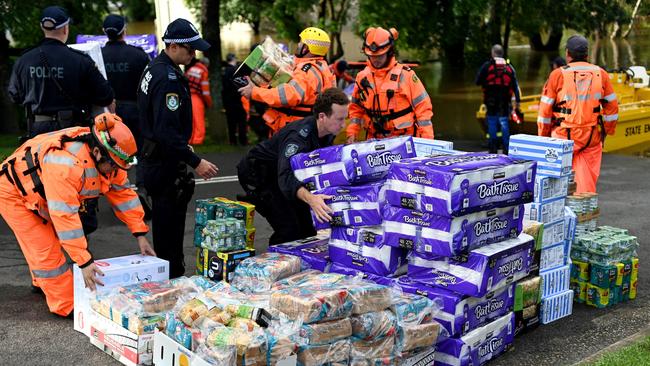
“But what we still have to be aware of is the fact that thousands and thousands of people are still on evacuation warnings, that the rivers will continue to swell, and that catchments will continue to experience flows of water not seen in 50 years and in some places 100 years.”
The Bureau of Meteorology’s Jane Golding added: “What we do need to watch today is some strong and gusty winds over the southern ranges and the Illawarra so with sodden earth, some vulnerable still remain from the fires last year we’re expecting to see quite a few trees down that way.”
Morrison tours flood-affected areas
The Prime Minister has toured flood-stricken parts of NSW in an Australian Defence Force helicopter.
Mr Morrison on Tuesday urged Australians under threat from the rising water levels to “remain calm” throughout the “complex weather event”.
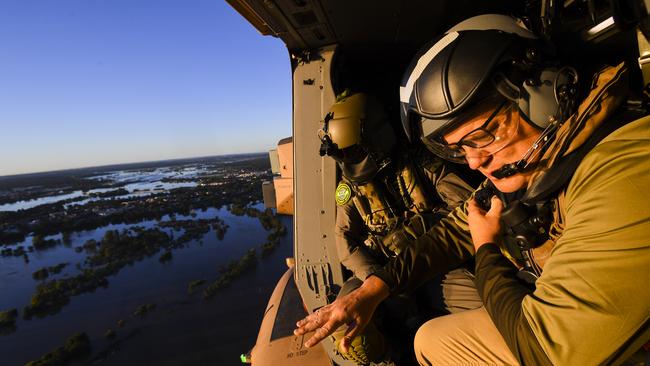
In a video posted to his Instagram on Wednesday, Mr Morrison showed the swollen Hawkesbury River in northwest Sydney, and said it was “just heartbreaking to see the scale of the flooding”.
He also included a video of him in the helicopter looking downcast upon viewing the damage.
Defence force helicopters were used on Tuesday in search and rescue missions in communities hard-hit by the extreme weather.
ADF personnel and equipment will also be used later this week to assist with the “clearance and recovery operation,” according to Acting Defence Minister Marise Payne.
Dangers remain as weather begins to ebb
Exhausted emergency workers performed up to 1000 rescues and 15,000 evacuations on Tuesday as torrential rain inundated large parts of the east coast.
However, relief may be in sight with the wild weather system that wreaked havoc across the NSW mid-north coast and western Sydney beginning to ebb as it moved south to Victoria.
State Emergency Service volunteers and Marine Rescue NSW were forced to save a family of four twice on Tuesday when they were plucked from floodwaters at Upper Colo on the Hawkesbury River. The original evacuation craft capsized in rough water as they were being taken from their flood-bound home, forcing a second rescue.
More than 18,000 people have been displaced by flooding, from Queensland to Victoria, with some residents along the Hawkesbury River at Windsor still stranded.
It may take weeks for flooded rivers to return to normal levels, meteorologists say, as the nation began counting the cost: more than $2bn and rising.
Floods halted coal rail shipments to Newcastle and caused a backlog of 40 ships waiting to dock, while equipment issues forced the Port of Newcastle to suspend coal ship-loading, which will slow its coal sales.
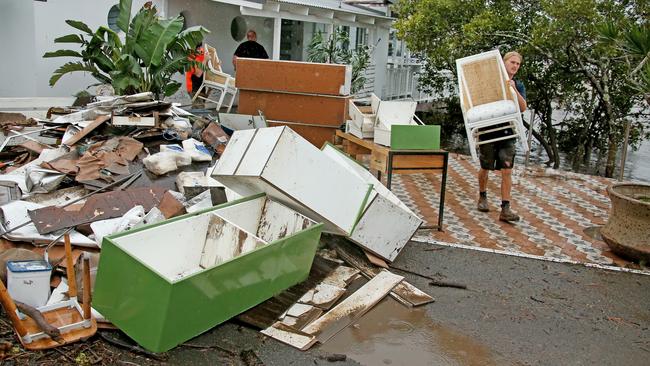
NSW farmers are warning that the cost to agriculture could run to hundreds of millions of dollars, with food shortages and price rises likely in coming months. Beef and cattle, dairy, oysters and horticulture have been the hardest hit, as producers come to grips with the loss of crop, livestock death and equipment destruction.
The nation’s insurers have received close to 12,000 claims, mostly from homeowners, with many more to follow. The Insurance Council of Australia has declared a catastrophe for large parts of NSW to allow priority for flood victims. The BOM says despite predictions for clear skies in NSW, high water levels in swollen rivers means flooding may continue for the rest of the week in the Sydney basin and mid-north coast.
On Tuesday night, the SES urged residents in low-lying areas of Singleton, in the Hunter Valley, to prepare for evacuation, with flood levels from the Hunter River expected to reach 11.5m on Wednesday morning.
The SES was preparing for flooding to worsen on Tuesday night at Upper Lower and Central Colo, the Picton CBD, Southgate on the Clarence River on the mid-north coast and Moree in the northwest, urging residents to prepare for a possible evacuation.
The BOM said the major flooding risk into Wednesday included the Hawkesbury Nepean rivers, the Gwydir River in northwest NSW, the Orora and Clarence rivers on the mid-north coast and the Hunter River.
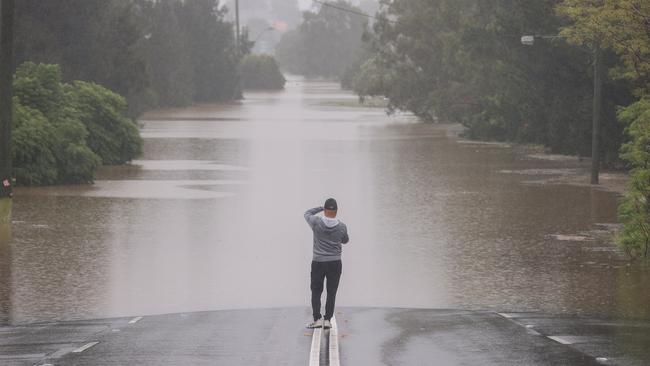
Spills from the Warragamba Dam had fallen to 240 gigalitres on Tuesday from a high of 500GL on Sunday.
BOM environmental prediction services water manager Victoria Dodds said flooding risks would continue until the weekend. “So although we’re seeing a flood peak, levels will remain high certainly through to Wednesday, and certainly until the weekend, when we’ll start to see these levels recede,” she said.
“So it’s going to be a protracted event in the Hawkesbury Nepean Valley. The eastern coastal catchments, with these really heavy falls, these catchments tend to respond very quickly, so as the rain clears, the situation can improve very quickly.
“However in western NSW, once the rivers get going, they can keep flowing for weeks or months on end.”
BOM climatologist Agata Imielska agreed that NSW was not “out of the woods yet”.
“The system is moving quickly, and we are seeing a clearing trend behind that,” she said.
“It is very important to remember that even though we will have that blue sky and sunshine returning, flooding will continue, and the flood risk will continue. We also have warnings for damaging winds.
“And with everything so saturated … it is really important to be aware of not just the flood risk … but also those dangerous conditions on the roads.”
More Coverage
